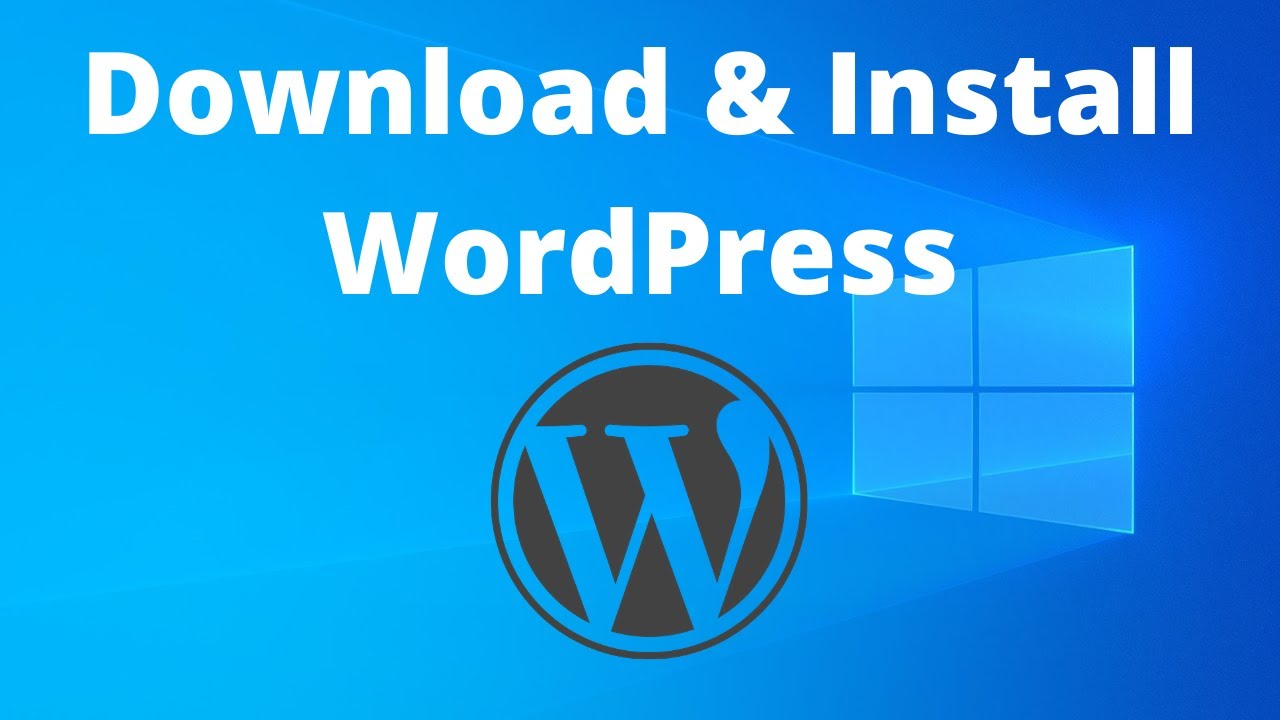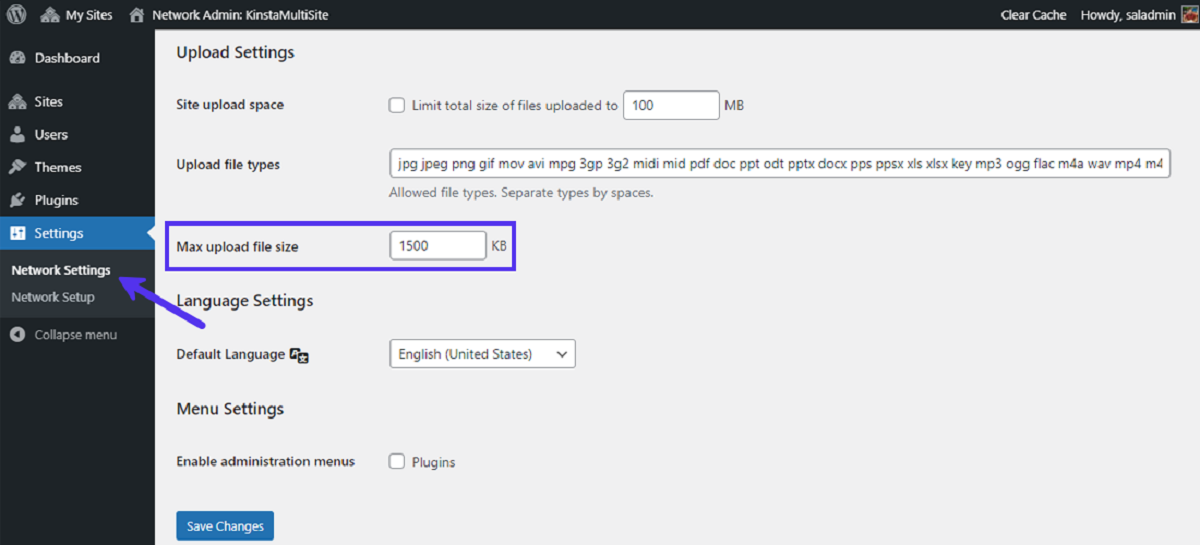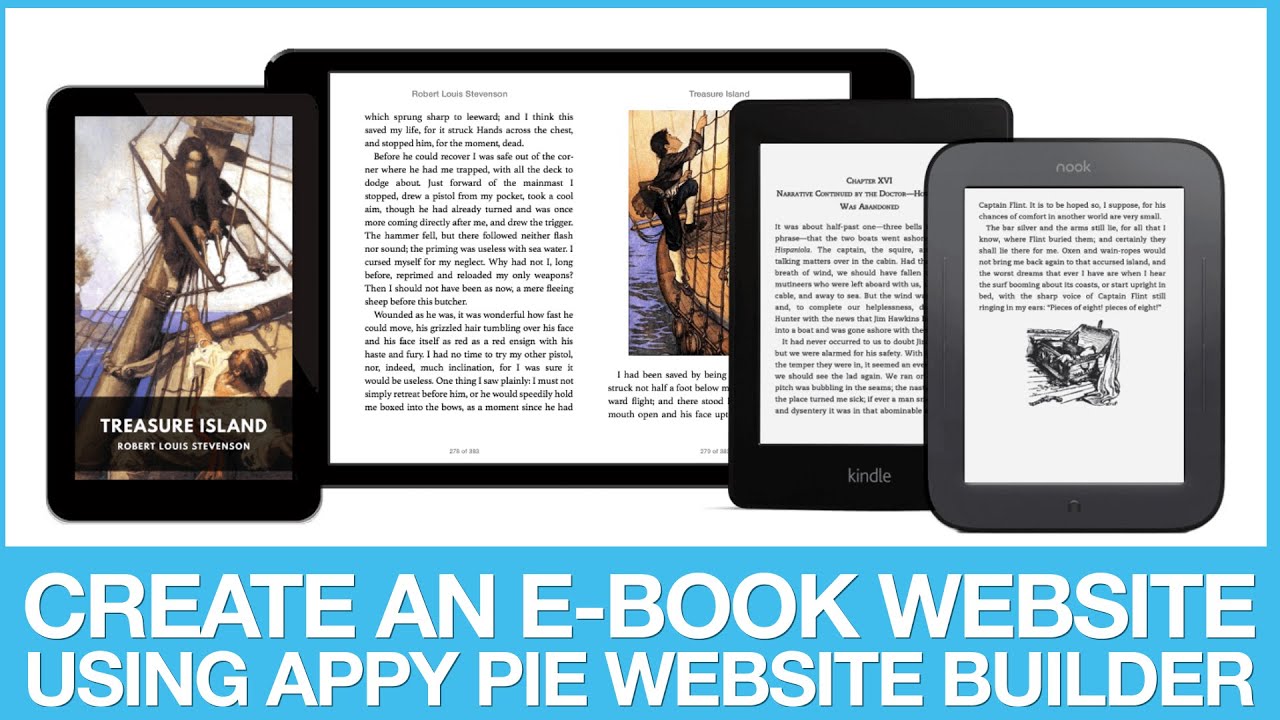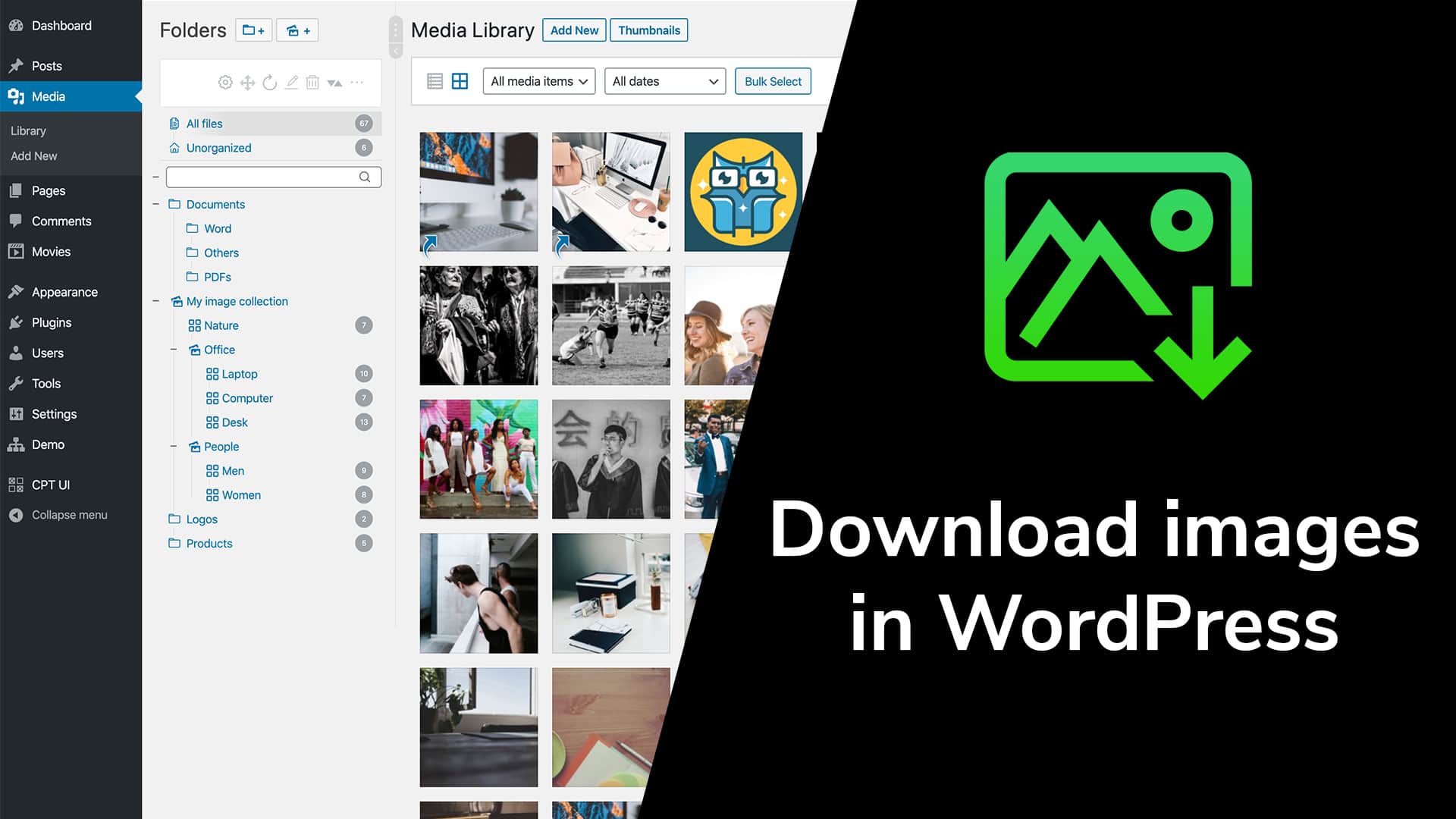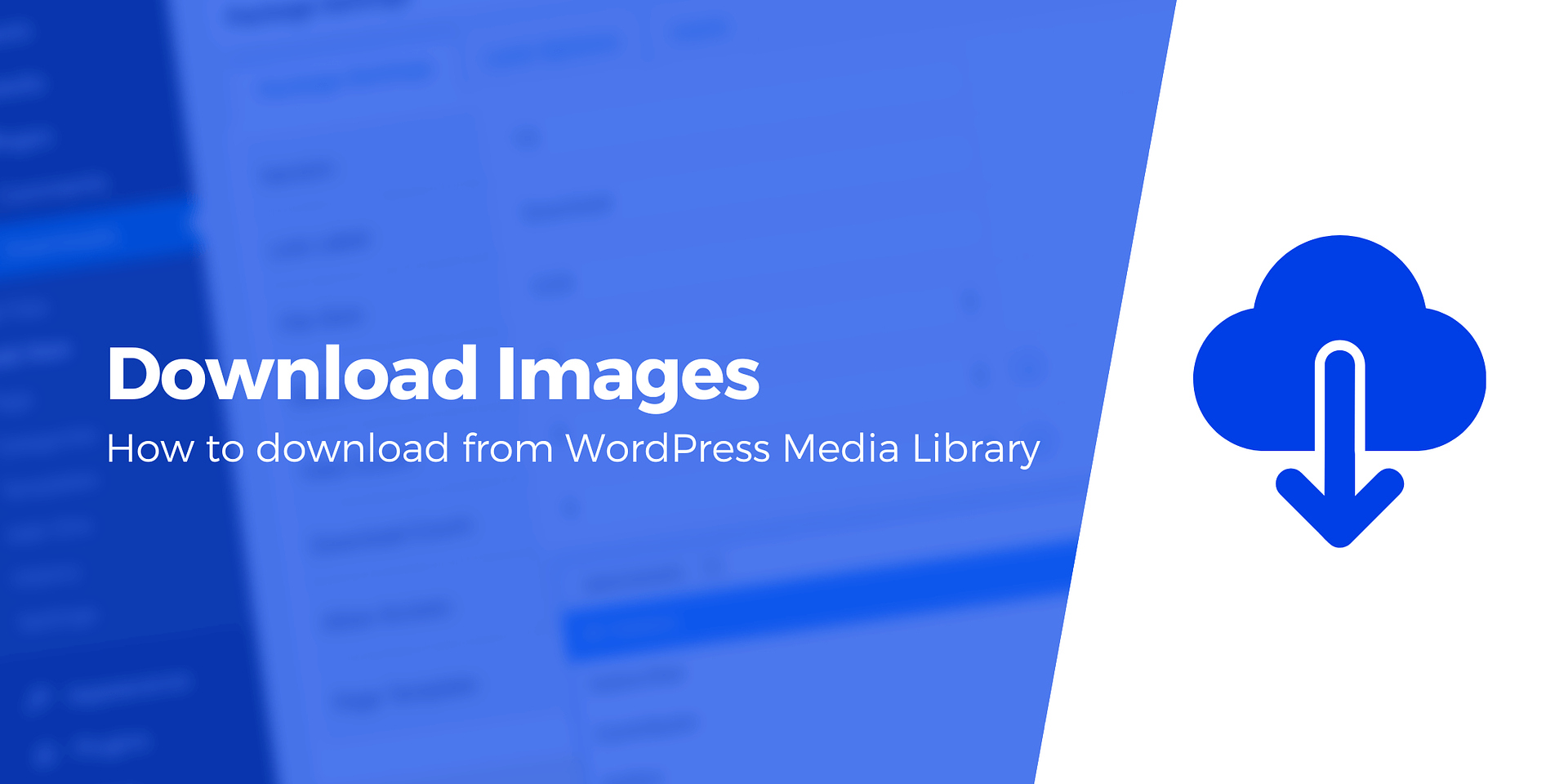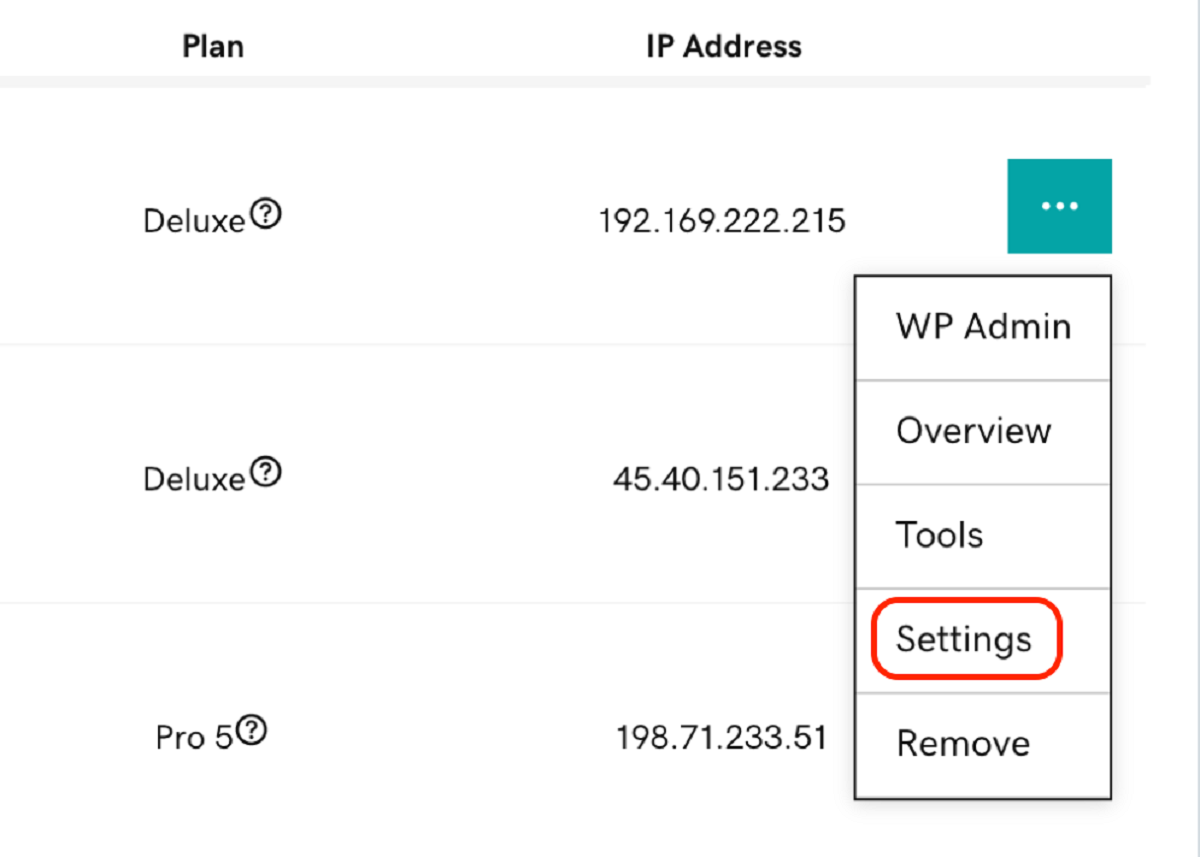Introduction
WordPress is a powerful and widely used content management system (CMS) that allows you to create and manage websites with ease. Whether you’re a beginner or an experienced web developer, WordPress offers a user-friendly interface and a wide range of customizable themes and plugins, making it the go-to choice for individuals and businesses looking to establish their online presence.
In this article, we will guide you through the process of downloading WordPress and setting it up on your own self-hosted website. Don’t worry if you have limited technical knowledge – we will break down each step into simple and easy-to-follow instructions.
Before we dive into the details, it’s important to note that there are two versions of WordPress available: WordPress.com and WordPress.org. WordPress.com is a hosted platform where you can create a website without worrying about technical aspects such as hosting and server management. On the other hand, WordPress.org provides you with the self-hosted version, which gives you complete control over your website and allows for more customization options.
In this tutorial, we will focus on downloading and setting up the self-hosted version of WordPress, which requires a domain name and a hosting provider. If you’re ready to take the plunge and build your website from scratch, let’s get started!
Step 1: Go to the official WordPress website
The first step in downloading WordPress is to visit the official WordPress website. Open your web browser and enter the following URL: https://wordpress.org.
Once you’re on the website, you’ll see the latest version of WordPress displayed prominently on the homepage. Take a moment to explore the website and familiarize yourself with the resources available.
WordPress.org provides a wealth of information, including documentation, forums, and a collection of themes and plugins. These resources can help you enhance the functionality and design of your WordPress website.
Additionally, the WordPress.org website offers a showcase of real-life websites built using WordPress. This can be a source of inspiration as you embark on your own website creation journey.
It’s important to note that WordPress.org is the official website for downloading the self-hosted version of WordPress. If you land on any other website claiming to provide WordPress downloads, proceed with caution as it may not be the official and trusted source.
Once you’re confident that you’re on the official WordPress website, you’re ready to proceed to the next step.
Step 2: Click on the “Get WordPress” button
After reaching the official WordPress website, the next step is to locate the “Get WordPress” button. This button is prominently displayed on the homepage, usually near the top or in a prominent position.
When you find the “Get WordPress” button, simply click on it. This will take you to the download page where you can access the latest version of WordPress.
On the download page, you’ll have the option to download the WordPress installation package in the format of a compressed ZIP file. This file contains all the necessary files and directories that make up the WordPress CMS.
It’s essential to download WordPress from the official website to ensure that you’re getting the most up-to-date and secure version of the software. The official WordPress website is regularly updated to provide bug fixes, security patches, and new features, so it’s crucial to stay current with the latest version.
WordPress is an open-source software, which means it’s continuously improved and enhanced by a vibrant community of contributors. By downloading from the official website, you can be confident that you’re accessing a reliable and reliable source of the software.
Once you’ve clicked on the “Get WordPress” button and downloaded the ZIP file, you’re ready to move on to the next step: extracting the downloaded file.
Step 3: Choose the self-hosted version
When it comes to downloading WordPress, it’s important to choose the right version for your needs. In this step, we will focus on selecting the self-hosted version of WordPress, which gives you the flexibility and control to host your website on your own server.
Once you have downloaded the WordPress installation package in the form of a ZIP file, it’s time to choose the self-hosted version. This version is commonly referred to as the “WordPress.org” version or the “self-hosted” version, distinguishing it from the hosted version available at WordPress.com.
The self-hosted version offers numerous advantages, including the ability to customize your website to suit your specific requirements, access to a vast library of themes and plugins, and full ownership and control of your website’s data.
To choose the self-hosted version, simply ensure that you have downloaded the WordPress installation package from the official website. Once you have the ZIP file, you can proceed to the next steps of setting up a hosting environment and installing WordPress on your chosen server.
It’s worth noting that if you’re looking for a straightforward and hassle-free solution, you may consider the hosted version available at WordPress.com. This option eliminates the need for separate hosting and server management. However, if you prefer complete control and flexibility over your website, the self-hosted version is the way to go.
Now that you have chosen the self-hosted version of WordPress, it’s time to move on to the next step: downloading and extracting the WordPress files onto your computer.
Step 4: Download WordPress
Now that you have chosen the self-hosted version of WordPress, it’s time to download the WordPress files onto your computer. This step is crucial as it allows you to have a local copy of WordPress, which you can later upload to your hosting server.
To download WordPress, you’ll need to locate the ZIP file that you obtained from the official WordPress website in the previous steps. This ZIP file contains all the necessary files and directories that make up the WordPress CMS.
Find the downloaded ZIP file on your computer and double-click it to extract the contents. This will create a new folder containing all the WordPress files. You can choose a suitable location on your computer to save this folder.
It’s important to ensure that you have a reliable and secure internet connection during the download process to avoid any interruptions or incomplete downloads. If the download is interrupted, you can simply return to the official WordPress website and repeat the steps to download the ZIP file again.
Remember to keep the downloaded WordPress files in a safe place on your computer, as you will need them in the next steps of the installation process.
Congratulations! You have successfully downloaded the WordPress files onto your computer. In the next step, we will guide you through the process of creating a database for your WordPress website.
Step 5: Extract the downloaded file
Once you have downloaded the WordPress installation package in the form of a ZIP file, the next step is to extract the contents of the downloaded file. This will allow you to access all the necessary files and directories required to install WordPress.
To extract the downloaded file, locate the ZIP file on your computer and right-click on it. A menu will appear, and you should select the option to “Extract” or “Extract All.” This action will prompt your computer to extract the files into a separate folder.
Choose a suitable location on your computer where you want to extract the files. It’s recommended to select a location that is easy to remember, such as your desktop or a designated folder for software installations.
Once the extraction process is complete, you will see a new folder containing all the WordPress files and directories. This folder will have the same name as the ZIP file you downloaded.
It’s important to keep the extracted WordPress files in a safe place as you will need them in the next steps of the installation process.
Extracting the downloaded file allows you to have easy access to the WordPress files, making it convenient to upload them to your hosting server later on.
Now that you have successfully extracted the WordPress files, you are one step closer to launching your WordPress website. In the next step, we will guide you through the process of creating a database for your WordPress installation.
Step 6: Create a database for WordPress
Before you can install WordPress, you need to create a database that will store all the necessary data for your website. A database is a crucial component of any CMS, including WordPress.
To create a database, you will typically need to access your hosting account’s control panel or a separate tool provided by your hosting provider. The exact steps may vary depending on your hosting setup, but the general process remains the same.
Here are the common steps to create a database for WordPress:
- Log in to your hosting account’s control panel or access the database management tool provided.
- Locate the option to create a new database.
- Provide a unique name for your database. It is recommended to choose a name that is easy to remember and relevant to your website.
- Create a username and password for your database. Make sure to use a strong password for security purposes.
- Assign the newly created username to the database.
- Save the database name, username, and password in a secure location as you will need them in the later steps.
Creating a database is a critical step as it enables WordPress to store and retrieve data efficiently. Without a proper database setup, your WordPress installation may encounter issues or fail to function correctly.
Once you have successfully created a database for your WordPress website, you are ready to proceed to the next step: setting up your database credentials in the wp-config.php file.
Step 7: Set up your database credentials
With your WordPress database created, the next step is to set up your database credentials. These credentials will allow WordPress to establish a connection with the database and enable the storage and retrieval of data.
To set up your database credentials, you will need to locate the wp-config.php file within the extracted WordPress files. This file contains essential configuration settings for your WordPress installation, including the database information.
Follow these steps to set up your database credentials:
- Locate the wp-config.php file within the WordPress files.
- Make a copy of the wp-config.php file and save it as a backup. This step serves as a precautionary measure to avoid any accidental changes or errors.
- Open the wp-config.php file using a text editor.
- Look for the section that contains the database configuration settings.
- Replace the placeholder values with your actual database information:
- Replace ‘database_name_here’ with the name of the database you created.
- Replace ‘username_here’ with the username associated with the database.
- Replace ‘password_here’ with the password you set for the database.
- Replace ‘localhost’ with the hostname or IP address of your database server. In most cases, ‘localhost’ should work, but you may need to refer to your hosting provider’s documentation or support for specific details.
- Save the changes to the wp-config.php file.
By setting up your database credentials correctly in the wp-config.php file, you ensure that WordPress can establish a secure connection to your database and access the necessary data to run your website.
Now that you have configured your database credentials, it’s time to move on to the next step: uploading WordPress to your hosting server.
Step 8: Configure your wp-config.php file
After setting up your database credentials in the wp-config.php file, the next step is to configure additional settings that are specific to your WordPress installation. These settings will allow you to customize various aspects of your website.
To configure your wp-config.php file, follow these steps:
- Locate the wp-config.php file within the extracted WordPress files.
- Open the wp-config.php file using a text editor.
- Scroll down to the section that contains the configuration settings.
- Here are some key settings you may want to pay attention to:
- Language: Set the language of your WordPress installation by modifying the ‘define(‘WPLANG’, ”)’ line. Replace the empty quotes with the desired language code, such as ‘en_US’ for English.
- Authentication Unique Keys and Salts: WordPress uses these keys and salts for added security. You can generate unique keys and salts by visiting the WordPress Secret Key Generator. Replace the placeholder values with the generated keys and salts.
- Table Prefix: By default, WordPress uses ‘wp_’ as the table prefix for its database tables. For enhanced security, consider changing this prefix to a custom value. Modify the ‘table_prefix’ line to reflect your desired table prefix.
- Make any necessary changes to the configuration settings.
- Save the changes to the wp-config.php file.
Configuring your wp-config.php file allows you to fine-tune your WordPress installation according to your preferences and security requirements. It’s important to review the available settings and make any necessary adjustments before proceeding with the installation.
Now that you have configured your wp-config.php file, you’re ready to move on to the next step: uploading WordPress to your hosting server.
Step 9: Upload WordPress to your hosting server
With your wp-config.php file configured, it’s time to upload the WordPress files to your hosting server. This step will make your website accessible to the world by placing the necessary files on your server.
To upload WordPress to your hosting server, you have several options:
- Using an FTP client: This method involves using FTP (File Transfer Protocol) software, such as FileZilla, to transfer the WordPress files from your computer to your hosting server.
- Using the File Manager in your hosting control panel: Many hosting providers offer a built-in File Manager tool that allows you to upload files and manage your website’s files and directories.
- Using the command line: For advanced users, you can use a command-line interface, such as SSH (Secure Shell), to transfer files to your server.
Regardless of the method you choose, the general steps for uploading WordPress are:
- Connect to your hosting server using the chosen method (FTP client, File Manager, or command line).
- Navigate to the directory where you want to install WordPress. This is typically the root directory of your website, but you may choose a subdirectory if desired.
- Upload all the extracted WordPress files and directories to the designated directory on your hosting server.
The upload process may take a few minutes depending on the size of the WordPress files and the speed of your internet connection.
Once the upload is complete, you should see the WordPress files and directories in the specified location on your hosting server.
Uploading WordPress to your hosting server is a crucial step in the installation process. It allows your website to have a physical presence on the internet, making it accessible to visitors from around the world.
Now that you have uploaded WordPress to your hosting server, it’s time to move on to the final step: running the WordPress installation script.
Step 10: Run the WordPress installation script
After uploading the WordPress files to your hosting server, you’re ready to run the WordPress installation script. This script will guide you through the process of setting up your WordPress website and configuring essential settings.
To run the WordPress installation script, follow these steps:
- Open your web browser and enter the domain name or URL where you uploaded the WordPress files. For example, if you uploaded the files to the root directory, you can access your website by entering “http://www.yoursite.com”.
- You should see the WordPress language selection screen. Choose the language that you want to use for your website and click “Continue”.
- On the next screen, you will be prompted to enter the database details you created earlier. These include the database name, username, password, and host. Fill in the required information and click “Submit”.
- If the database credentials are correct, you will see a confirmation message indicating that WordPress has successfully connected to your database. Click “Run the installation” to proceed.
- Next, you will be asked to provide some basic information about your website, such as the site title, username, password, and email address. Fill in the necessary details and click “Install WordPress”.
- WordPress will now run the installation process, creating the necessary tables in your database and configuring your website settings.
- Once the installation is complete, you will see a success message. You can then click “Log in” to access the WordPress admin dashboard and start customizing your website.
Running the WordPress installation script is the final step in the installation process. It ensures that your website is set up correctly and ready for you to start creating content and configuring the design.
Congratulations! You have successfully run the WordPress installation script. Now, you can explore the admin dashboard and begin building your website with WordPress.
Step 11: Complete the installation process
Congratulations! You are on the final step of the WordPress installation process. To complete the installation, there are a few remaining tasks that will ensure your website is fully set up and ready to go.
Follow these steps to complete the installation process:
- On the WordPress login page, enter the username and password you created during the installation.
- Click “Log In” to access the WordPress admin dashboard.
- Take some time to explore the dashboard, familiarize yourself with the settings, and customize your website’s appearance and functionality.
- Configure the general settings of your website, including the site title, tagline, time zone, and other relevant information.
- Install essential plugins to enhance the functionality of your website. Some popular ones include Yoast SEO for optimizing your site’s search engine visibility, Akismet for spam protection, and Jetpack for additional features.
- Select a theme that aligns with your website’s goals and customize it to match your branding. You can choose from the numerous free and premium themes available in the WordPress theme directory or from third-party theme providers.
- Start creating and publishing content by adding pages, blog posts, or any type of content that is relevant to your website’s purpose.
- Regularly update WordPress, plugins, and themes to ensure the latest features, security patches, and bug fixes are applied.
By completing these tasks, you will have a fully functional WordPress website, ready to attract visitors and achieve your online goals.
Remember, the installation process is just the beginning of your WordPress journey. As you continue to build and manage your website, explore additional resources, tutorials, and forums to expand your knowledge and make the most of the powerful WordPress platform.
Now that you have completed the installation process, it’s time to unleash your creativity and take your WordPress website to new heights.
Conclusion
Congratulations on successfully downloading, installing, and setting up WordPress on your self-hosted website! By following the steps outlined in this guide, you have taken a significant step towards establishing your online presence and creating a powerful and customizable website.
Throughout this process, you learned how to navigate the official WordPress website, download the self-hosted version of WordPress, and extract the necessary files. You also created a database, set up the database credentials, and configured the wp-config.php file to ensure a secure and efficient connection with your website’s data.
Furthermore, you uploaded the WordPress files to your hosting server, ran the WordPress installation script, and completed the installation process by logging in to the WordPress admin dashboard. From there, you have the flexibility to customize your website’s appearance, install plugins to enhance functionality, and start creating engaging content.
Remember, building a successful WordPress website entails continuous learning, exploration, and optimization. Take advantage of the vast resources available in the WordPress community, from plugins and themes to tutorials and support forums, to enhance your website and maximize its effectiveness.
We hope this guide has provided you with the knowledge and confidence to download and install WordPress on your own self-hosted website. Now, go forth and unleash your creativity, share your knowledge, and make your online mark with the power of WordPress!







